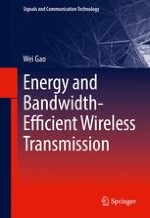2017 | OriginalPaper | Buchkapitel
7. Transceiver II: Receiver Architectures
verfasst von : Wei Gao
Erschienen in: Energy and Bandwidth-Efficient Wireless Transmission
Aktivieren Sie unsere intelligente Suche, um passende Fachinhalte oder Patente zu finden.
Wählen Sie Textabschnitte aus um mit Künstlicher Intelligenz passenden Patente zu finden. powered by
Markieren Sie Textabschnitte, um KI-gestützt weitere passende Inhalte zu finden. powered by
